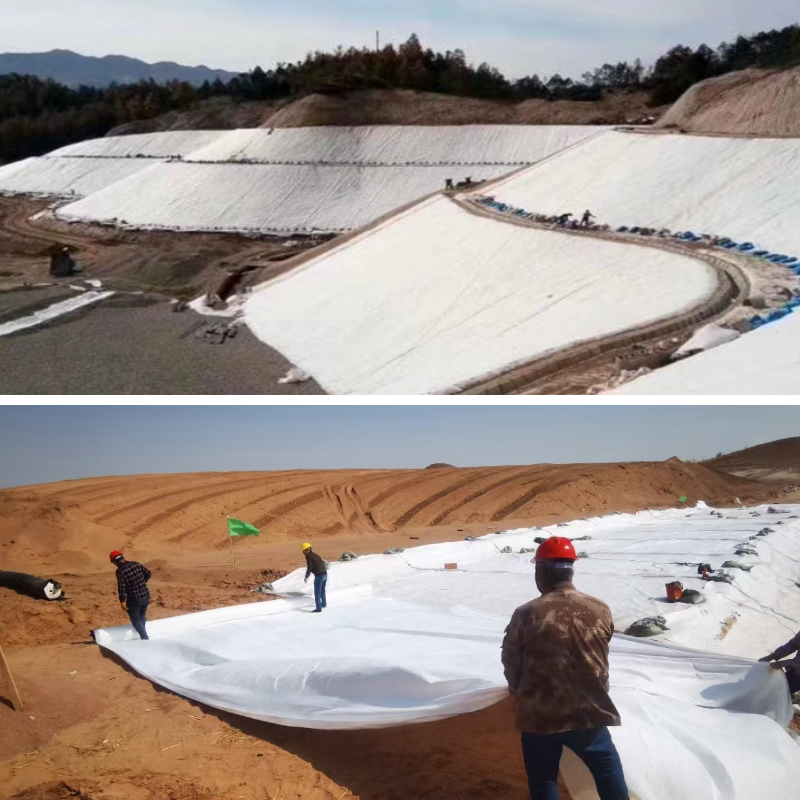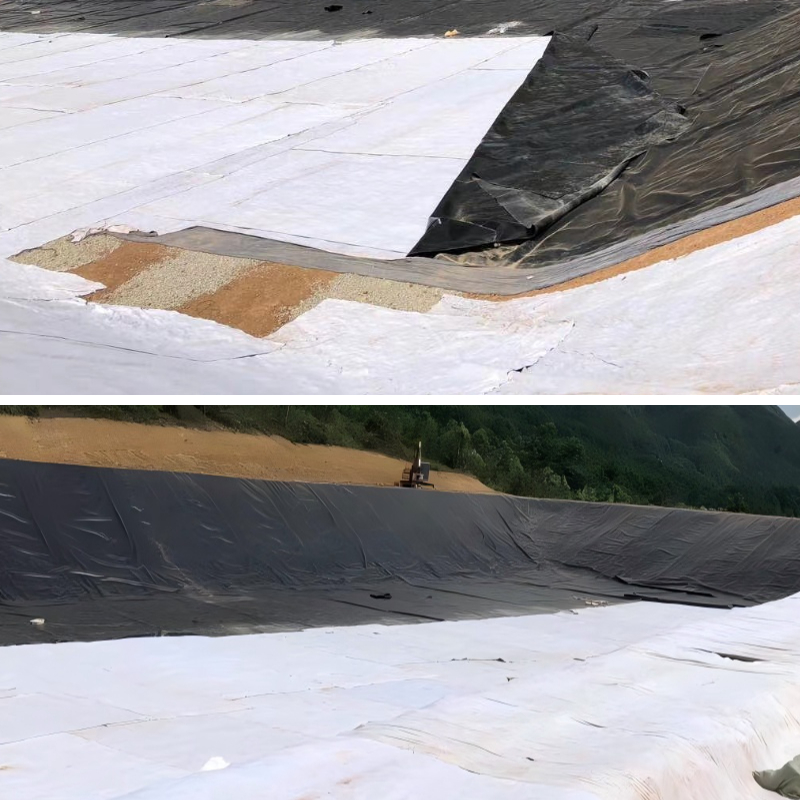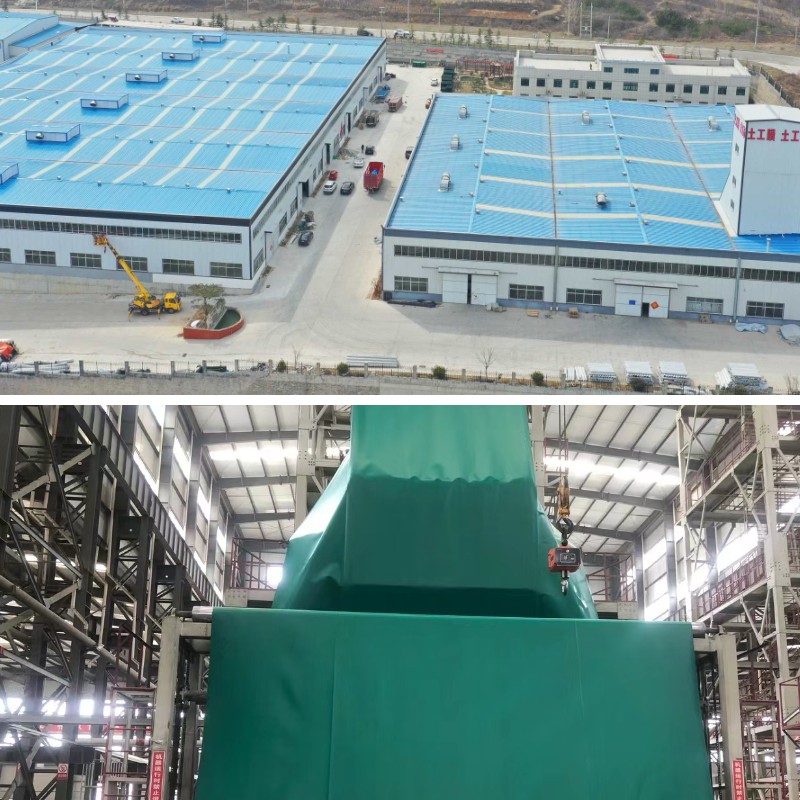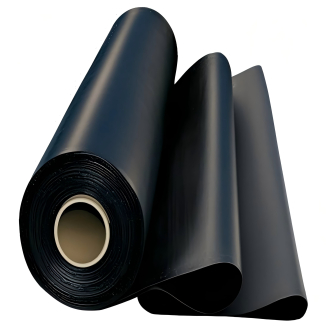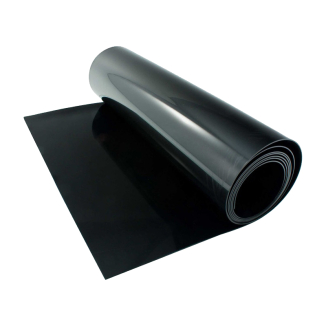How to Choose the Best Geotextile Cloth for Drainage Projects (Residential & Commercial)
Drainage projects—whether a residential out of doors French drain or a commercial enterprise parking lot system—rely on geotextile fabric to characteristic reliably. This specialised cloth filters soil particles, prevents clogs in pipes or gravel layers, and ensures easy water flow. But deciding on the incorrect geotextile can lead to steeply-priced issues: standing water, eroded soil, or normal drain repairs. The key mistake many make is the use of a one-size-fits-all approach—residential and commercial enterprise duties have incredible needs, and even hidden buildings (like subsurface drainage geotextile) require precise considerations. Below is a step-by-step facts to deciding on the proper geotextile fabric for your project.
1. Start with Your Project Type: Residential vs. Commercial
The first rule of selecting geotextile fabric is matching it to your project’s scale, soil, and water volume. Residential and enterprise drainage buildings face very wonderful demands—ignoring this leads to premature failure.
Residential Drainage: Small-Scale, Easy to Install
Residential initiatives (e.g., French drains, rain gardens, groundwork perimeter drains) deal with low water volumes and are many times hooked up by means of house owners or small contractors. Key wishes include:
Lightweight design: Easy to cut, wrap spherical gravel, or swimsuit in tight areas (like between a foundation and gravel).
Basic filtration: Blocks silt and clay from clogging drains, alternatively stays permeable adequate for rainwater to waft by means of quickly.
Budget-friendly: No choose for industrial-grade strength—mid-range selections work perfectly.
For most residential jobs, a 200–300 g/m² non-woven geotextile fabric is ideal. For hidden buildings (like under-foundation drains), figure out for subsurface drainage geotextile with a permeability price of ≥0.1 m/s—this balances filtration and water flow, stopping each clogs and standing water.
Commercial Drainage: Heavy-Duty, Long-Lasting
Commercial initiatives (e.g., parking lots, sports activities things to do fields, toll street place drains) face heavy traffic, immoderate water volumes, and harsh stipulations (like constructing gear or asphalt pressure). Key needs include:
High tensile strength: Resists tearing below weight or soil pressure—critical for areas with motors or heavy equipment.
Industrial filtration: Handles clay-heavy or sandy soils that can rapidly clog large drainage networks.
Durability: Must closing 10+ years to hold away from luxurious replacements and challenge downtime.
Commercial initiatives usually require 400–600 g/m² woven geotextile fabric for strength. For hidden commercial enterprise buildings (like stadium underdrains), bolstered subsurface drainage geotextile is best—it withstands compression and continues filtration even below heavy loads.
2. Choose the Right Geotextile Type for Drainage
Not all geotextile is designed for drainage—three vital varieties (non-woven, woven, knitted) serve special purposes. Your desire depends upon on whether or not or no longer you favor filtration, strength, or quick coverage.
Non-Woven Geotextile Cloth: Best for Filtration (Top Pick for Subsurface Drainage)
Non-woven geotextile is made thru bonding polyester or polypropylene fibers (via heat or needle-punching). It has a fluffy, porous form that excels at trapping high-quality soil particles even as letting water omit through—making it the go-to for subsurface drainage geotextile projects.
How it works for drainage: Water flows via the fiber gaps, then again silt and clay get caught, retaining gravel and pipes clean.
Ideal uses: Residential French drains, rain gardens, and industrial sports activities things to do self-discipline underdrains (e.g., soccer pitches).
Key specs: 200–300 g/m² (residential) or 300–400 g/m² (commercial). Ensure it meets ASTM D4491 (permeability standard) to preserve away from slow water flow.
Woven Geotextile Cloth: Best for Strength (Commercial Heavy-Duty)
Woven geotextile is created thru weaving polypropylene or polyester threads into a tight grid. It’s rigid, strong, and a good deal much less permeable than non-woven options—perfect for initiatives the vicinity sturdiness matters more than ultra-fast filtration.
How it works for drainage: While it filters quintessential dirt, its essential feature is to resource heavy hundreds (like concrete or vehicles) barring stretching or tearing.
Ideal uses: Commercial parking lot subsurface drains, avenue region drains, and residential driveways (under gravel or pavers).
Key specs: Tensile electricity of ≥5 kN/m (residential) or ≥10 kN/m (commercial). Look for UV resistance (ASTM D4355) if uncovered to sunlight.
Knitted Geotextile Cloth: Only for Temporary Drainage
Knitted geotextile is lightweight and flexible, made with the useful resource of looping threads. It’s low value then again an awful lot much less durable—use it completely for non everlasting wishes (6–12 months) like quick constructing internet site on-line drainage.
Limitations: Poor long-term filtration (fine soil seeps by way of over time) and low strength.
Note: Never use knitted geotextile for subsurface drainage geotextile projects—it will clog or tear quickly, fundamental to repairs.
3. Check These 4 Critical Parameters Before Buying
Even the desirable form of geotextile fabric will fail if its specs don’t in structure your project. Focus on these four non-negotiable parameters to maintain away from mistakes:
Permeability Rate (Water Flow Speed)
Permeability measures how fast water passes thru geotextile—the most fundamental spec for drainage. Too slow, and water backs up; too fast, and soil particles slip through.
Residential: 0.1–0.5 m/s (works for French drains and rain gardens).
Commercial: 0.5–1.0 m/s (handles high-volume constructions like stadium underdrains).
Subsurface drainage geotextile: Prioritize non-woven options—their porous form balances flow and filtration.
Tensile Strength (Resistance to Tearing)
Tensile energy determines how a lot pressure geotextile material can deal with previously than tearing. This is vital for enterprise initiatives or residential jobs with heavy equipment.
Residential: ≥3 kN/m (enough to stand up to shovel damage in the direction of installation).
Commercial: ≥10 kN/m (handles constructing gear and vehicle loads).
Test tip: Ask suppliers for ASTM D4595 results—this famous proves strength.
Weight (Gram per Square Meter, g/m²)
Weight shows geotextile thickness and durability. Heavier alternatives last longer then again are more difficult to install.
Residential: 200–300 g/m² (light ample for DIY, lengthy lasting for 5–8 years).
Commercial: 400–600 g/m² (lasts 10+ years, resists compression from asphalt).
Subsurface drainage geotextile: 300–400 g/m² (balances electrical energy and ease of installation).
UV Resistance (Outdoor Longevity)
If geotextile is uncovered to daylight hours (e.g., top-layer drainage in a rain garden), it desires UV stabilizers to preserve away from breaking down.
Residential/commercial: Look for ASTM D4355 certification (500 hours of UV exposure, ≥70% strength retention).
Buried subsurface drainage geotextile: UV resistance is lots much less critical, alternatively though pick out a product with easy stabilizers (prevents harm all thru installation).
4. Match Geotextile Cloth to Specific Drainage Applications
Now that you recognize your task type, material, and specs, pair geotextile with conventional drainage scenarios:
Residential: French Drain
Need: Filter silt, let water float to perforated pipe, face up to shovel damage.
Best geotextile: 200–300 g/m² non-woven geotextile cloth.
Install tip: Wrap gravel and pipe in the fabric (leave 6–12 inches of overlap) to seal out soil. Avoid woven options—they slow water go with the waft too much.
Residential: Foundation Drainage
Need: Protect foundation from water damage, go well with in tight spaces.
Best geotextile: 150–200 g/m² non-woven subsurface drainage geotextile (thin on the other hand permeable).
Key spec: Choose mold-resistant geotextile—damp groundwork areas breed mildew.
Commercial: Parking Lot Drainage
Need: Handle cars/trucks, filter sand/clay, closing 10+ years.
Best geotextile: 400–500 g/m² woven geotextile cloth.
Pro tip: Add a layer of non-woven subsurface drainage geotextile underneath it for extra filtration—prevents clogging of critical pipes.
Commercial: Sports Field Drainage
Need: Drain water shortly (no muddy fields), filter top notch soil.
Best geotextile: 300–400 g/m² non-woven geotextile (permeability 0.8–1.0 m/s).
Result: Fields dry in 1–2 hours after rain, maintaining them playable.
Final Tips to Avoid Costly Mistakes
Skip “landscape fabric”: It’s thin, clogs fast, and isn’t actual geotextile cloth. Spend $1–$2 per rectangular foot for mid-grade options.
Ask for samples: Test permeability with the aid of pouring water through a sample—if it pools, it’s too slow.
Buy extra: Add 10–15% extra geotextile for overlaps (stops soil from seeping by using gaps).
Check certifications: Ensure merchandise meet ASTM (U.S.) or EN (Europe) standards—avoid no-name producers with no test results.
Conclusion
The excellent geotextile fabric isn’t the most expensive—it’s the one that fits your project’s kind (residential vs. commercial), material desires (non-woven for filtration, woven for strength), and specs (permeability, strength). For most hidden systems, subsurface drainage geotextile (non-woven, 300–400 g/m²) is the reliable choice.
By following these steps, you’ll preserve away from clogs, standing water, and highly-priced rework. Ready to buy? Contact a relied on geotextile supplier—share your challenge small print (size, soil type, use) and ask for a custom-made recommendation. Your drainage computing device (and wallet) will thank you.
Contact Us
Company Name: Shandong Chuangwei New Materials Co., LTD
Contact Person :Jaden Sylvan
Contact Number :+86 19305485668
WhatsApp:+86 19305485668
Enterprise Email: cggeosynthetics@gmail.com
Enterprise Address: Entrepreneurship Park, Dayue District, Tai 'an City,
Shandong Province


